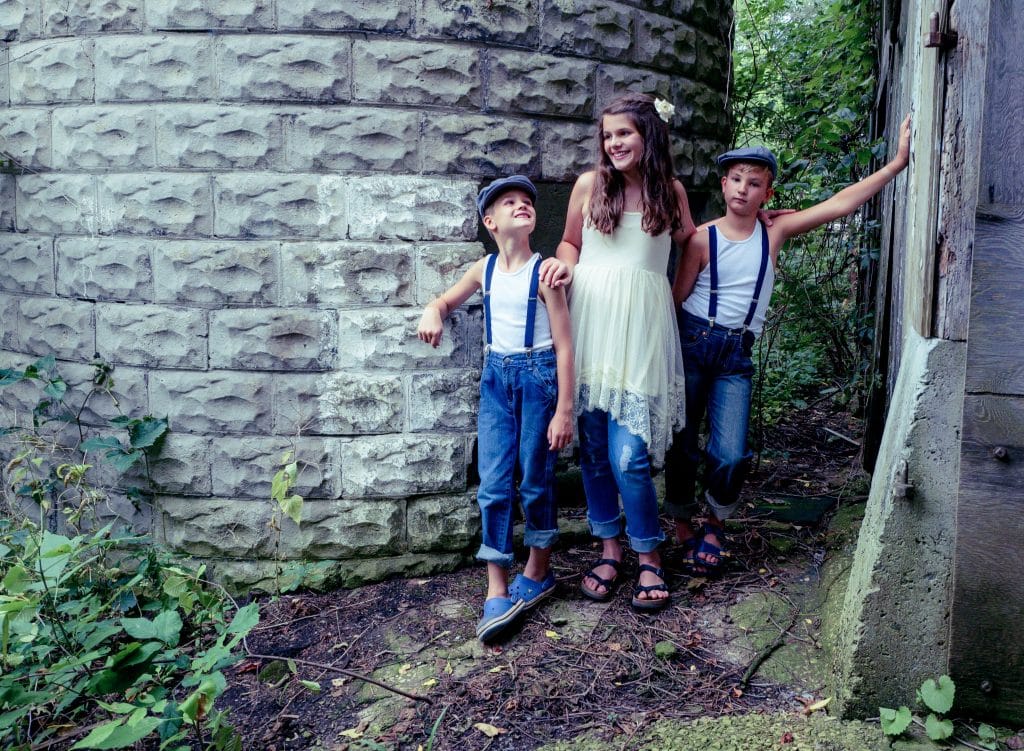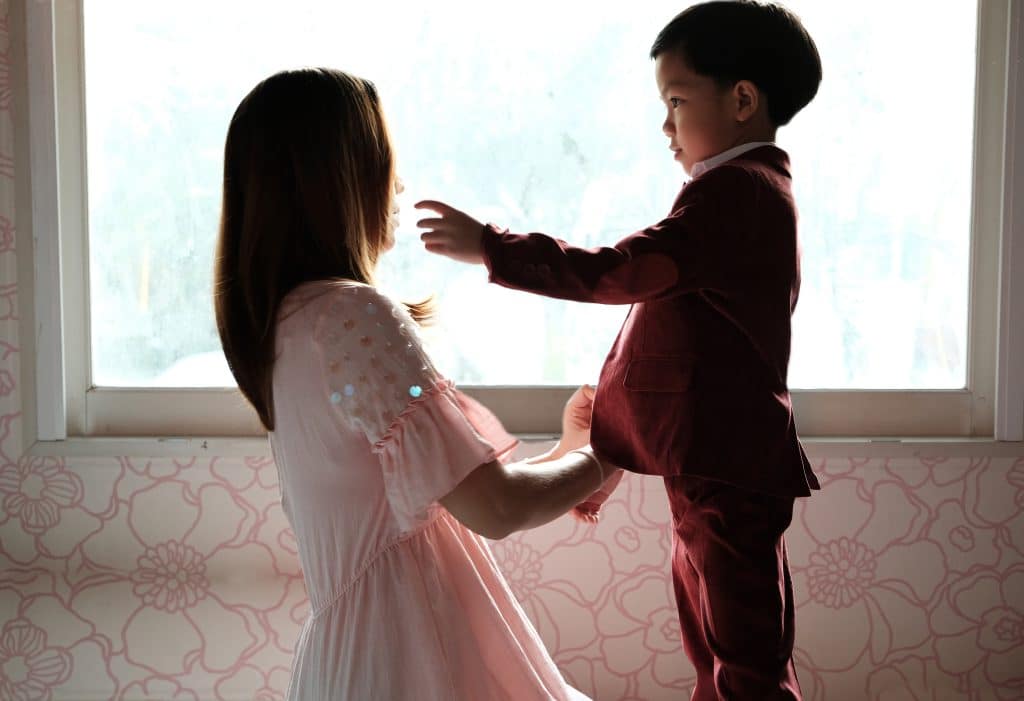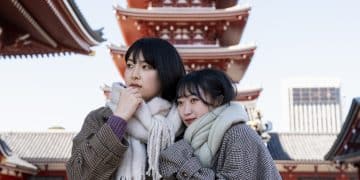The Representation of Family in Doramas: Harmony, Duty, and Love

🎎 The Representation of Family in Doramas:
In these dramas, the representation of family relationships often mirrors centuries of cultural and philosophical tradition. Rooted in Confucian values and the Japanese concept of wa (和), meaning harmony, doramas portray families as essential social units that uphold moral balance and emotional stability.
Each family member occupies a defined role — parent, child, elder, or sibling — and the health of those relationships symbolizes the broader harmony of society itself.
Parents, especially fathers, typically represent authority, protection, and sacrifice, standing as moral anchors for the household. Mothers, on the other hand, are depicted as the emotional core, sustaining unity through quiet strength and compassion.
This nuanced representation of parental roles reflects not only traditional family hierarchies but also the emotional subtleties that define Asian domestic life.
Children in doramas often face the delicate tension between filial obligation and personal independence. Their journeys — balancing self-discovery with respect for family expectations — capture the heart of what makes these stories so emotionally resonant. Through them, viewers witness a universal truth:
that love within a family is not always expressed through words, but through gestures of understanding, endurance, and mutual respect.
Ultimately, the representation of family in doramas offers a profound reflection of cultural continuity and emotional resilience. It shows that even as societies modernize, the desire to honor one’s roots, protect one’s loved ones, and find balance between tradition and individuality remains timeless.
Unlike Western series, where emotional outbursts are common, doramas portray family love through silence and symbolism. A shared dinner, a parent fixing a broken umbrella, or a late-night gesture of care speaks louder than words. Even when conflicts arise, reconciliation happens subtly, through reflection and unspoken understanding rather than confrontation.
Family in doramas is often depicted as a space of duty and devotion, but also as a mirror of modern change. Contemporary series explore new structures — single parents, grandparents raising children, or estranged siblings rediscovering one another — showing how the meaning of family continues to evolve while keeping the same emotional sincerity.
This quiet and respectful portrayal of family life teaches that love doesn’t always need to be loud; sometimes, the truest form of affection is found in patience, perseverance, and shared silence.
💮 Common Representations of Family Themes in Doramas
The representation of family in doramas goes far beyond the surface of everyday domestic life — it becomes a mirror of culture, morality, and emotional endurance.
Through subtle storytelling and quiet emotional tension, these dramas reveal universal human experiences filtered through distinctly Asian values of respect, patience, and perseverance. Each storyline reflects how family relationships serve as both a sanctuary and a test of one’s inner strength.
1. Parental Sacrifice and Emotional Distance

One of the most enduring representations of family in doramas is the selfless devotion of parents. They are often portrayed as the silent backbone of the household — individuals who willingly give up personal dreams, happiness, or rest for the sake of their children’s future.
Fathers frequently represent duty and responsibility, dedicating themselves fully to work as a form of love. Yet, their physical absence often leads to emotional distance, leaving unspoken feelings between parent and child. Mothers, meanwhile, embody quiet strength and endurance — carrying the emotional weight of the family while rarely voicing their own pain.
This nuanced representation of parental love creates a bittersweet tension: a family bound by affection yet separated by silence. The lack of verbal communication doesn’t signify the absence of care but rather reflects a cultural belief that love is proven through action, not words. In this way, doramas offer a moving reflection of emotional restraint — showing that devotion can exist even without expression.
2. Representation of Filial Duty and Respect for Elders
One of the most defining aspects of the representation of family in doramas is the emphasis on filial duty — the moral and emotional responsibility children hold toward their parents and elders.
The Japanese concept of oya kōkō (親孝行) captures this idea perfectly, describing the importance of showing gratitude, respect, and care for one’s parents as a lifelong obligation.
In many stories, this representation plays out as a conflict between personal independence and family expectation. Characters often struggle to choose between following their own dreams and fulfilling the roles their parents have set for them. Unlike Western narratives that might glorify rebellion, doramas rarely frame independence as defiance.
Instead, they portray it as a delicate journey toward understanding and harmony, where love and duty coexist.
This representation of respect for elders reaffirms the belief that family unity is the foundation of personal identity. Even when generations misunderstand each other, there is an unspoken trust that binds them together — a quiet, moral thread that values patience, empathy, and reconciliation over confrontation.
3. Representation of Reconciliation After Generational Conflict
Generational tension serves as one of the most emotionally resonant forms of family representation in doramas. It reflects the ongoing dialogue between tradition and modernity — a conversation that continues to shape Japanese and Korean society.
Stories like My Mister and Tokyo Sonata illustrate how differing worldviews — obedience versus freedom, stability versus ambition — create subtle yet powerful emotional divides between parents and children.
However, these conflicts rarely end in permanent separation. Instead, doramas highlight the representation of reconciliation as a process of rediscovery. Forgiveness and understanding unfold not through dramatic gestures but through quiet moments of shared empathy — a meal shared after years apart, a letter left unsent, or a simple acknowledgment of each other’s pain.
This form of family representation teaches that healing is not instantaneous but gradual — built through compassion, reflection, and time. It shows that despite cultural and generational divides, love within a family always seeks its way back to balance.
In the world of doramas, reconciliation is not about winning or losing an argument; it’s about remembering that family bonds, though strained, are never truly broken.
4. Representation of the Burden of Expectations
Another recurring element in the representation of family within doramas is the weight of expectation — a force that often shapes identity, ambition, and emotional well-being.
In many Asian cultures, a person’s achievements or failures are not viewed as individual outcomes but as reflections of the entire family’s reputation. This deep-rooted sense of collective identity turns personal success into a shared responsibility and personal struggle into a family concern.
Doramas capture this emotional pressure with honesty and sensitivity. Characters are frequently torn between the desire to follow their own path and the need to uphold their family’s honor. A son might pursue a creative dream while feeling guilt for not joining the family business, or a daughter might question whether independence means disobedience.
Through this nuanced representation, the genre reveals that the burden of expectation can both constrain and inspire. It becomes a narrative catalyst for growth, where characters gradually learn that true success lies not in perfection but in balance — between love and individuality, between self-worth and belonging.
Doramas ultimately suggest that family pride should not silence authenticity but rather evolve into mutual understanding and respect.
5. Representation of Healing Through Empathy and Silent Understanding

Perhaps the most distinctive representation of family in doramas lies in their portrayal of healing through silence and empathy.
Unlike Western dramas, where reconciliation often occurs through direct confrontation or spoken apologies, doramas rely on subtle, symbolic gestures to communicate forgiveness and love. A repaired bento box, a freshly cooked meal left at the table, or a hesitant smile across the dinner room — these small actions speak louder than words ever could.
This understated representation of emotional expression highlights a core belief in Asian storytelling: that understanding matters more than explanation. True connection doesn’t always need to be spoken — it’s felt, recognized, and reciprocated through shared acts of care.
Doramas use this quiet emotional language to show that love, though restrained, is profoundly deep.
Healing within the family is not immediate; it grows slowly through time, empathy, and shared endurance.
By portraying these tender, wordless moments, doramas remind us that forgiveness often begins not with speech, but with presence — and that silence, when filled with love, can become the purest form of reconciliation.
Shows like Reply 1988, Mother, and My Mister embody all these elements beautifully.
They portray ordinary households filled with quiet struggles, everyday meals, and moments of silent forgiveness — transforming the mundane into something deeply moving.
Each story becomes a meditation on how families endure, evolve, and express love in their own quiet ways.
The result is a storytelling style that celebrates the gentle strength of family bonds — where affection doesn’t need to shout to be felt, and where even silence can carry a lifetime of emotion.
🏡 The Family in Western Series: Individuality and Emotional Expression
In strong contrast to doramas, Western television series — particularly those from the United States and Europe — often portray family as a space for individual growth, emotional honesty, and reinvention. Rather than emphasizing harmony or collective duty, these stories center on self-expression, personal freedom, and open communication. The family becomes a setting where people learn to voice their truth, confront generational wounds, and redefine what love and belonging truly mean.
Where Asian dramas prize quiet restraint, Western family narratives celebrate dialogue. Characters are encouraged to speak up, challenge authority, and even question long-standing traditions in pursuit of self-discovery. The emotional landscape is raw, dynamic, and ever-evolving — mirroring Western ideals of independence and authenticity.
💬 Family Diversity and Changing Social Norms
Modern Western storytelling embraces the reality that family comes in many forms.
Shows like This Is Us, Modern Family, Gilmore Girls, Parenthood, and The Fosters portray a wide spectrum of domestic life — from single parents juggling responsibilities to same-sex couples raising children, multi-ethnic families navigating cultural differences, and intergenerational households redefining closeness.
These series reflect an increasingly pluralistic society where love defines family more than blood. The focus is on inclusion, acceptance, and emotional resilience. Through laughter, conflict, and reconciliation, these families show that belonging can be built — not just inherited.
❤️ Emotional Openness and Verbal Affection
One of the most defining traits of Western family representation is the willingness to verbalize emotion. Saying “I love you,” apologizing directly, or discussing trauma openly are common and celebrated moments in these stories.
Dialogue becomes the main tool for healing — whether it’s a parent admitting a mistake or a teenager expressing vulnerability.
This emotional transparency encourages viewers to see communication as an act of love, highlighting that honesty can strengthen relationships even when it hurts.
⚖️ Balancing Independence and Connection
In Western narratives, individual freedom often coexists with the need for connection.
Characters leave home, make unconventional choices, and sometimes rebel — yet their journeys frequently lead them back to the family in new, more mature ways.
This cyclical storytelling underlines the idea that true independence does not mean disconnection, but rather learning to love from a place of self-awareness and mutual respect.
Shows such as Gilmore Girls and Parenthood perfectly capture this dynamic — depicting parent-child relationships that evolve from dependence to friendship, where love matures through honesty and time.
🪞 Generational Conflict and Emotional Growth
Western family dramas thrive on intergenerational tension — between parents shaped by tradition and children seeking change. These conflicts, though painful, often lead to mutual understanding.
Rather than silent endurance, Western families value emotional confrontation as a path to growth. Tears, therapy sessions, and heartfelt apologies are all part of the healing process.
Through these conflicts, characters learn empathy, humility, and emotional maturity — transforming family struggles into opportunities for self-improvement.
🌈 Redefining What Family Means

Ultimately, Western series challenge the idea of a single “ideal” family. They portray households where imperfection, diversity, and vulnerability are sources of strength.
Love is not about hierarchy or obedience but about acceptance and individuality.
Whether it’s an adoptive parent forming a new bond, a couple navigating divorce, or siblings rebuilding trust, every storyline reinforces that family is chosen, nurtured, and continually redefined.
Through this lens, the family in Western television becomes a living symbol of progress — open, expressive, and endlessly adaptable.
It teaches that love can coexist with freedom, and that the courage to communicate honestly is the foundation of lasting relationship.
Common Family Themes in Western Series
Western series explore family through a lens of individuality, communication, and emotional authenticity. Unlike doramas — where love is shown through restraint and duty — Western stories emphasize dialogue, confrontation, and personal truth.
They reflect societies that value self-expression and equality within relationships, where each family member’s voice carries importance. Below are some of the most prominent themes that shape the portrayal of family in Western storytelling.
1. Self-Expression and Emotional Openness
At the heart of many Western family narratives lies the freedom to speak — to share emotions, doubts, and frustrations openly.
Characters are encouraged to articulate their feelings rather than hide them, turning vulnerability into a strength.
A child confronting a parent, a couple discussing their differences, or siblings reconciling after years of silence are common storytelling moments.
This emphasis on emotional openness presents the family as a safe space for authenticity, where honesty, even when painful, leads to healing.
Shows like This Is Us and Parenthood exemplify this by transforming everyday conversations into deeply emotional turning points.
2. Diversity in Family Types
Modern Western television has redefined what a family looks like. Gone are the days of the traditional nuclear household as the universal model.
Today’s shows portray families built on choice, inclusion, and love, reflecting real-world diversity.
Single parents, same-sex couples, adoptive parents, blended families, and multi-generational homes appear side by side, each treated with respect and empathy.
Series like Modern Family and The Fosters showcase that family bonds are formed not only through blood but through commitment and emotional care.
This representation expands the cultural understanding of family as connection rather than convention.
3. Breaking Traditional Expectations

While doramas often explore harmony and duty, Western series highlight breaking free from tradition to pursue individuality.
Characters challenge outdated gender roles, question parental authority, or choose unconventional life paths.
Rather than being punished for nonconformity, they’re celebrated for their courage to be different.
These narratives encourage viewers to redefine success, love, and parenthood — not as rigid models, but as evolving expressions of self.
In this sense, family becomes a living space for personal transformation, not just a structure to preserve.
4. Rebuilding Trust Through Communication
Conflict is an essential ingredient in Western family storytelling, but so is reconciliation.
Whether it’s a parent and child repairing a strained bond or partners overcoming betrayal, the key to healing is open dialogue.
Characters often go through cycles of misunderstanding, confrontation, and emotional repair — illustrating that communication is the bridge that rebuilds families.
This theme reinforces the belief that love is not the absence of conflict but the willingness to work through it together.
In Gilmore Girls and This Is Us, conversations — sometimes awkward, sometimes raw — are what bring families back to one another.
5. Representation of Empowerment and Authenticity
In Western dramas, the representation of empowerment and authenticity within families reflects a culture that values individuality and self-expression. Family support is often depicted as the driving force behind personal growth and emotional liberation. Parents encourage children to pursue their passions, partners uplift one another’s ambitions, and siblings inspire each other to evolve beyond limitations.
This representation emphasizes that being true to oneself is not an act of rebellion but a profound contribution to the family’s collective strength. Authenticity is portrayed as a form of love — one that flourishes when each member is allowed to live honestly and without fear of judgment.
Stories like Parenthood and Brothers & Sisters illustrate this beautifully, showing that families thrive when individuality is respected rather than suppressed. Through this lens, the representation of family becomes both grounding and liberating — a space where love and acceptance coexist, and where empowerment grows from mutual understanding rather than conformity.
Where doramas find meaning in restraint, Western series find truth in dialogue.
Both storytelling traditions reveal different emotional languages — one rooted in quiet symbolism, the other in open catharsis — yet they share a universal message: family, in all its forms, is where love learns to speak.
🌏 Cultural Bridges and Key Contrasts
| Aspect | Doramas (Japan/Korea) | Western Series (US/Europe) |
|---|---|---|
| Core Value | Harmony, respect, and duty | Individuality and self-expression |
| Conflict Style | Silent endurance and subtle reconciliation | Open discussion and confrontation |
| Family Structure | Traditional hierarchy and filial piety | Diverse, flexible, and inclusive |
| Emotional Expression | Reserved and gesture-based | Verbal and emotionally explicit |
| Goal | Collective balance and belonging | Personal authenticity and fulfillment |
These differences mirror their respective societies:
Asian dramas often highlight interdependence and tradition, while Western series emphasize freedom and emotional visibility.
Yet both are evolving — with modern doramas exploring non-traditional families and Western shows embracing multi-generational empathy.
❤️ Representation of What Both Worlds Teach Us
Ultimately, whether the story unfolds in Tokyo, Seoul, or New York, the representation of family remains the emotional heart of storytelling. Across cultures, languages, and generations, we are drawn to narratives that explore a universal truth: love — in all its forms — begins and is tested within the family.
In doramas, the representation of love and family reveals that affection can be quiet yet unbreakable. Family bonds are strengthened through selflessness, endurance, and mutual respect. Parents express love through sacrifice; children reciprocate it through perseverance. Healing emerges not through confrontation but through empathy. Every scene — a shared meal, a father’s silent gesture, or a mother’s subtle smile — speaks volumes about loyalty, devotion, and emotional continuity. These representations remind us that love does not always need words to be deeply felt.
In contrast, Western series emphasize a representation of love that is bold, expressive, and transformative. Characters grow by articulating their pain and joy, confronting what wounds them, and celebrating what heals them. This portrayal teaches that vulnerability is not a sign of weakness but an act of courage. Within these stories, communication becomes the essential bridge that transforms conflict into understanding and connection.
Together, these contrasting representations of family demonstrate that while cultures differ in how they express emotion, they share the same human longing — to love, to be understood, and to belong.
📌 Conclusion
The representation of family in doramas versus Western series is not just about culture — it’s about the many ways humans express love.
Through silence or speech, duty or freedom, every story reflects one simple truth:
Family is where we learn how to love, grow, and understand ourselves.
Watch Japanese Doramas • Thematic Exploration of Identity • Cultural Storytelling in Asian Dramas





